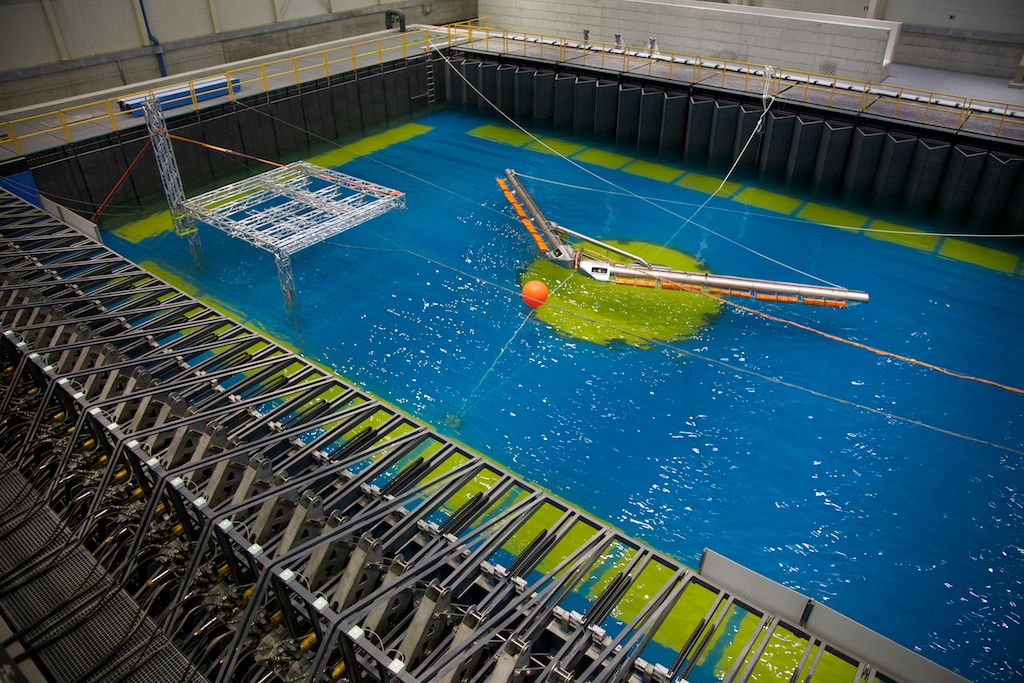A new indoor wave, current and wind simulator is enabling a marine research centre in Cantabria, Spain, to expand its work in the field of coastal and offshore engineering.
Unique research centre for marine engineers
- 22 April 2013
The Coastal and Ocean Basin is expected to meet the need for a facility which will enable us to build up scientific and technical knowledge, technology and services for the development of marine engineering, both in offshore seas and coastal areas, in Spain and internationally.
For over 30 years, the Santander-based Environmental Hydraulics Institute IH Cantabria (EHICF) has been at the forefront of research, teaching and training in the field of fresh and saltwater environments. But the opening in 2011 of a new building to house the institute has also provided enough space to install a testing pool capable of generating multidirectional waves, omnidirectional currents and winds which will enable marine engineers to carry out large-scale wave tests for coastal and offshore engineering.
The wave simulator pool, known as the Cantabria Coastal and Ocean Basin (CCOB), has a width of 44 metres, a length of 30 m and has a depth of between 4 and 12 m. It can hold 5.5 million litres of water and can simulate waves of up to 20 m in height and winds of 150 km/h.
World class research facility
In an attempt to reduce the Spain’s reliance on imported fossil fuels, the country is currently developing its renewable energy industry. As Spain has a coastline over 8 000 km, scientific and technical research into the marine environment is of great strategic importance for the country. But a lack of research infrastructure had, in recent years, hampered research in the field of marine engineering and Spanish researchers and companies have been highly dependent on expertise from abroad.
The new simulator pool, though, will help to reverse that situation by providing Spain with a testing facility that is unique in the world. The project has created 60 new jobs, of which 35 are permanent.
Meanwhile, the institute’s new building has been designed with a combination of maximum functional flexibility and environmental quality, with care given to maximise natural light. Energy-saving considerations were given priority in the construction and fitting out of the new building.
Total investment and EU funding
Total investment for the “Construction of the Environmental Hydraulics Institute and Cantabria Coastal and Ocean Basin Research and Development Facility” project was EUR 31 344 160, with a contribution of EUR 12 369 342 from the EU’s European Regional Development Fund through the “Cantabria” Operational Programme for the 2007-2013 programming period. The national contribution was EUR 10 279 860 and the regional contribution was EUR 8 694 958.

